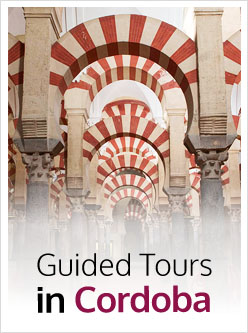The first news about the minaret built during Caliph Abderraman III’s times being used as a Christian Belfry tower date back to the year 1360, and they are graphic and visual representations, such as the miniatures in the choral books preserved in the Mosque-Cathedral. However, the oldest inscription proving the Christian use of the minaret can be found on one of the clock bells, from 1495, and it indicates that it was made under the mandate of Bishop Iñigo Manrique.
In the year 1593 the Cathedral Chapter decides to remodel the Belfry tower after having suffered numerous imperfections, mainly due to a great storm that battered the city on the 21st September 1589. The condition of the tower was terrible, and the octagonal spire at the top of the clock bell was almost destroyed. The chosen project was the one presented by Hernán Ruiz III, son and grandson of the greatest Senior Masters of the Mosque-Cathedral.
The works had already started in July 1593, and there is written testimony of that as the Cathedral Chapter appointed a group of experts to supervise them. This group was formed by relevant figures, such as the Senior Master of the Cathedral of Seville, Asensio de Maeda, his counterpart in our city, Hernán Ruiz, Juan de Ochoa and Juan Coronado. They agreed for the works to be continued and finished.
During the carrying out of the works, a provisional tower was erected (some say it was a bell gable) over the Door of Forgiveness. Six bells were put on it, with the aim of guiding the religious life of the city without interfering in the works of the Belfry tower. The second one and part of the first section of the Muslim minaret were demolished and all the windows were blinded. This way, Hernán Ruiz III surrounded the Islamic building with a thick wall and he even covered it until the bells section. This section had a serliana, on each of its sides, that is, a round arch with two lintelled alcoves on both sides, thus repeating the same plan carried out in the portico of the cathedral retrochoir years earlier.
The big investments that, from this moment on, will focus on the completion of the Cathedral transept will cause several works, including those in the tower, to be paralised. In fact, in 1606 Hernán Ruiz III died in Arcos de la Frontera, where he had gone to build a bridge; therefore, he could not see his work completed.
Until 1616, when Juan Sequero de Matilla is in charge of the direction of the works, we have no evidence of activity in the tower. Bishop Brother Diego de Mardones’s assignment consisted in finishing what the previous master could not, the section of the clock. Every scholar believes that he followed Hernán Ruiz III’s traces, that is, a tower crowned by a “well bricked carved” cupola covered by a round vault and finished with balls (as he had done in the previous sections). A year later, in 1617, the works were finished.
Curiously enough, it was in the middle of the 17th century, that is, almost 30 years after the Belfry Tower was in a state of “imminent wreck“. In fact, master Sebastián Vidal himself asked the Cathedral Chapted the following: “the tower towards feeling and the Senior Master had made a request… expressing the need to repair it…“. The Cathedral Chapter decides then to fix the imperfections, and they hired Gaspar de la Peña, who was Senior Master of the works of the Crown at that time. With him, the southern and western sides of the Tower were consolidated and reinforced and the original doors of the minaret were closed. On the eastern side, he chose a different solution in order to respect the Door of Forgiveness as much as possible, and he built a blind arch on an old pillar of the door and on a new one towards the courtyard, which made him demolish the two arches of the portico and substitute them by a wider one. Therefore, the works of the tower undermined the initial planning of the Door of Forgiveness, which was thus integrated in the planning. In 1664 Gaspar de Peña added a new cupola in the bells section, over which the figure of Saint Raphael was placed, made by the sculptors Pedro de la Paz and Bernabé Gómez del Río.
In 1727 a storm ravaged the Belfry Tower, destroying, among other things, the base of the Saint Raphael. A few years later, the famous earthquake in Lisbon in 1755 violently shook the building, and numerous pieces collapsed, especially decorative elements. Baltasar Dreveton, from France, was in charge of restoring the tower for a period of eight years.
If you are not sure what to do in Córdoba, we recommend you visit the Mosque-Cathedral hiring one of our guided tours. We will explain there a special chapter dedicated to the Belfry Tower. Choose to do high quality sightseeing with qualified staff. Do not hesitate, ArtenCórdoba is the best option.
Text: J.A.S.C.


All the information about the monuments, festivals and places of interest in Cordoba… at a click!
If you want more information about the monuments of Cordoba, before doing your guided tours, here is the most complete guide, written by the tour guides and historians of our team
Over 2,000 items!
Mosque-Cathedral
Medina Azahara
Alcazar of the Christian Kings
Synagogue
The Museums
The Coutyards

All the information about the monuments, festivals and places of interest in Cordoba… at a click!
If you want more information about the monuments of Cordoba, before doing your guided tours, here is the most complete guide, written by the tour guides and historians of our team
Over 2,000 items!

















